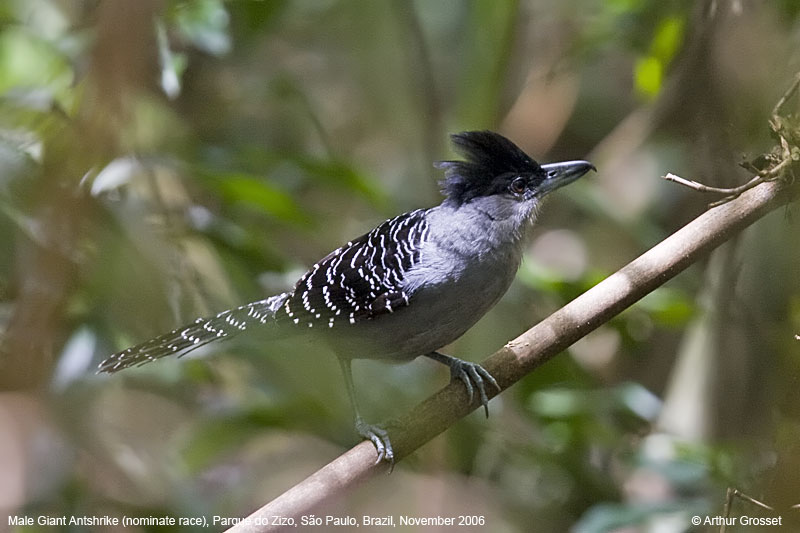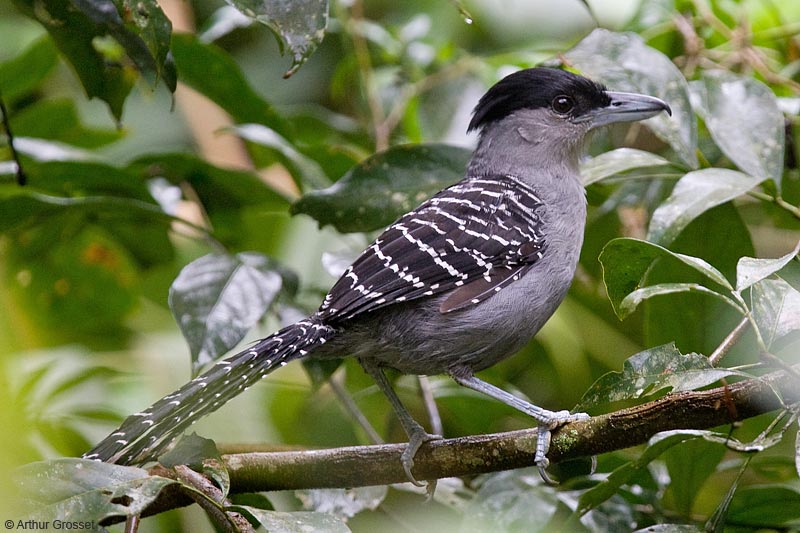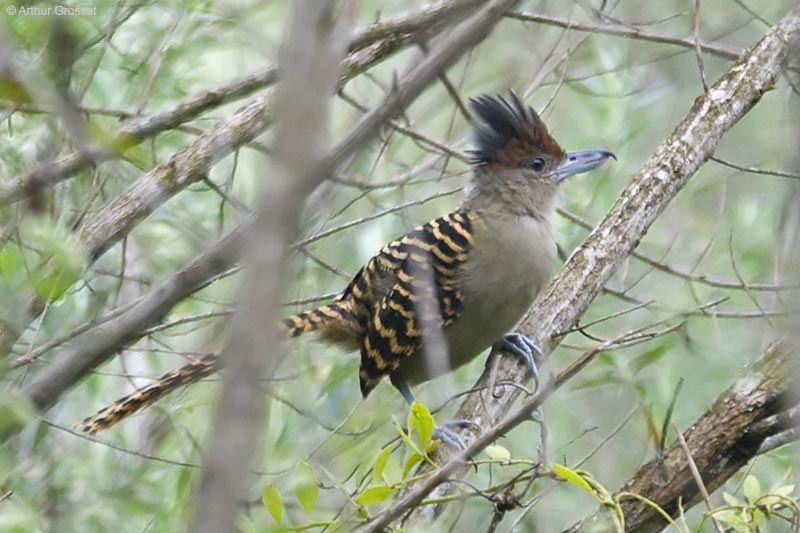
Batara cinerea
TAXONOMY
Batara cinereus Vieillot, 1819.
OTHER COMMON NAMES
French: Batara gйant; German: Batarб; Spanish: Batarб Grande.
PHYSICAL CHARACTERISTICS
Largest species of the formicariids: 12.5–14 in (30.5–35.5 cm),
with a relatively long tail and a massive bill.
DISTRIBUTION
East-central South America, including the eastern slope of the
Andes Mountains in Bolivia, northern Argentina, and in a separate
range in southeastern Brazil and northeastern Argentina.
HABITAT
Up to 9,800 ft (3,000 m) in humid tropical and montane forest,
forest-edges, and dense thickets in higher woodland; dense
vegetation of the lower or middle parts of the forest canopy.
BEHAVIOR
Nonmigratory pairs defend a relatively large territory. They
forage close to the ground or in the middle canopy. They are a
rarely seen shy and skulking bird. Song is a loud, rather fast series
of repeated, ringing, musical notes.
FEEDING ECOLOGY AND DIET
Feed in dense foliage on insects and other arthropods.
REPRODUCTIVE BIOLOGY
Monogamous pairs bond for life, typically lay two eggs, and
share incubation and care of nestlings and fledglings.
CONSERVATION STATUS
Uncommon species but can be locally abundant, and not
threatened.
SIGNIFICANCE TO HUMANS
No direct significance, except for the indirect economic benefits
of bird-watching and ecotourism.
Other popular Animals
Photo Gallery of - Giant antshrike




 Animalia Life
Animalia Life